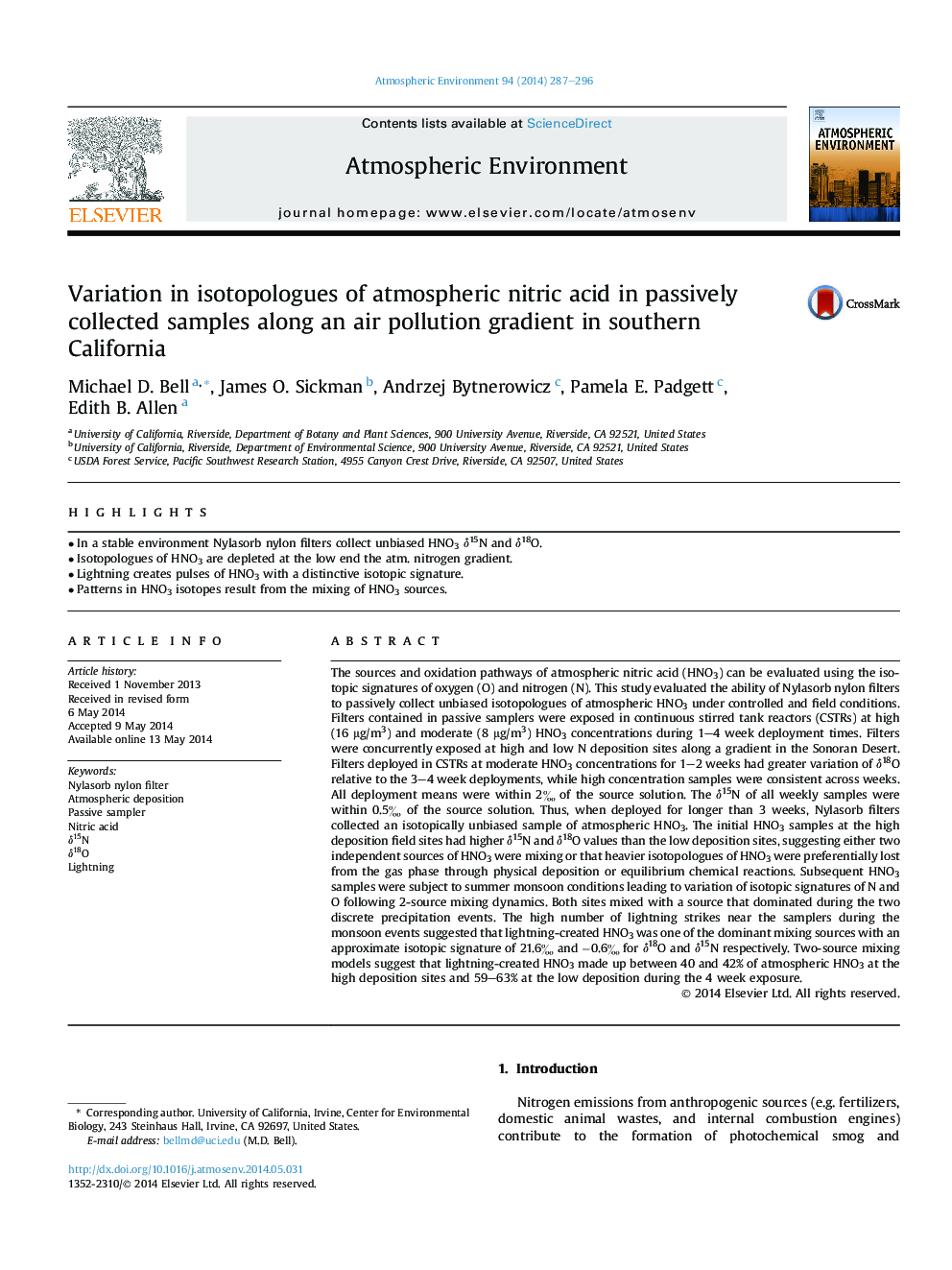| کد مقاله | کد نشریه | سال انتشار | مقاله انگلیسی | نسخه تمام متن |
|---|---|---|---|---|
| 6339584 | 1620377 | 2014 | 10 صفحه PDF | دانلود رایگان |
- In a stable environment Nylasorb nylon filters collect unbiased HNO3δ15N and δ18O.
- Isotopologues of HNO3 are depleted at the low end the atm. nitrogen gradient.
- Lightning creates pulses of HNO3 with a distinctive isotopic signature.
- Patterns in HNO3 isotopes result from the mixing of HNO3 sources.
The sources and oxidation pathways of atmospheric nitric acid (HNO3) can be evaluated using the isotopic signatures of oxygen (O) and nitrogen (N). This study evaluated the ability of Nylasorb nylon filters to passively collect unbiased isotopologues of atmospheric HNO3 under controlled and field conditions. Filters contained in passive samplers were exposed in continuous stirred tank reactors (CSTRs) at high (16 μg/m3) and moderate (8 μg/m3) HNO3 concentrations during 1-4 week deployment times. Filters were concurrently exposed at high and low N deposition sites along a gradient in the Sonoran Desert. Filters deployed in CSTRs at moderate HNO3 concentrations for 1-2 weeks had greater variation of δ18O relative to the 3-4 week deployments, while high concentration samples were consistent across weeks. All deployment means were within 2â° of the source solution. The δ15N of all weekly samples were within 0.5â° of the source solution. Thus, when deployed for longer than 3 weeks, Nylasorb filters collected an isotopically unbiased sample of atmospheric HNO3. The initial HNO3 samples at the high deposition field sites had higher δ15N and δ18O values than the low deposition sites, suggesting either two independent sources of HNO3 were mixing or that heavier isotopologues of HNO3 were preferentially lost from the gas phase through physical deposition or equilibrium chemical reactions. Subsequent HNO3 samples were subject to summer monsoon conditions leading to variation of isotopic signatures of N and O following 2-source mixing dynamics. Both sites mixed with a source that dominated during the two discrete precipitation events. The high number of lightning strikes near the samplers during the monsoon events suggested that lightning-created HNO3 was one of the dominant mixing sources with an approximate isotopic signature of 21.6â° and â0.6â° for δ18O and δ15N respectively. Two-source mixing models suggest that lightning-created HNO3 made up between 40 and 42% of atmospheric HNO3 at the high deposition sites and 59-63% at the low deposition during the 4 week exposure.
Journal: Atmospheric Environment - Volume 94, September 2014, Pages 287-296
